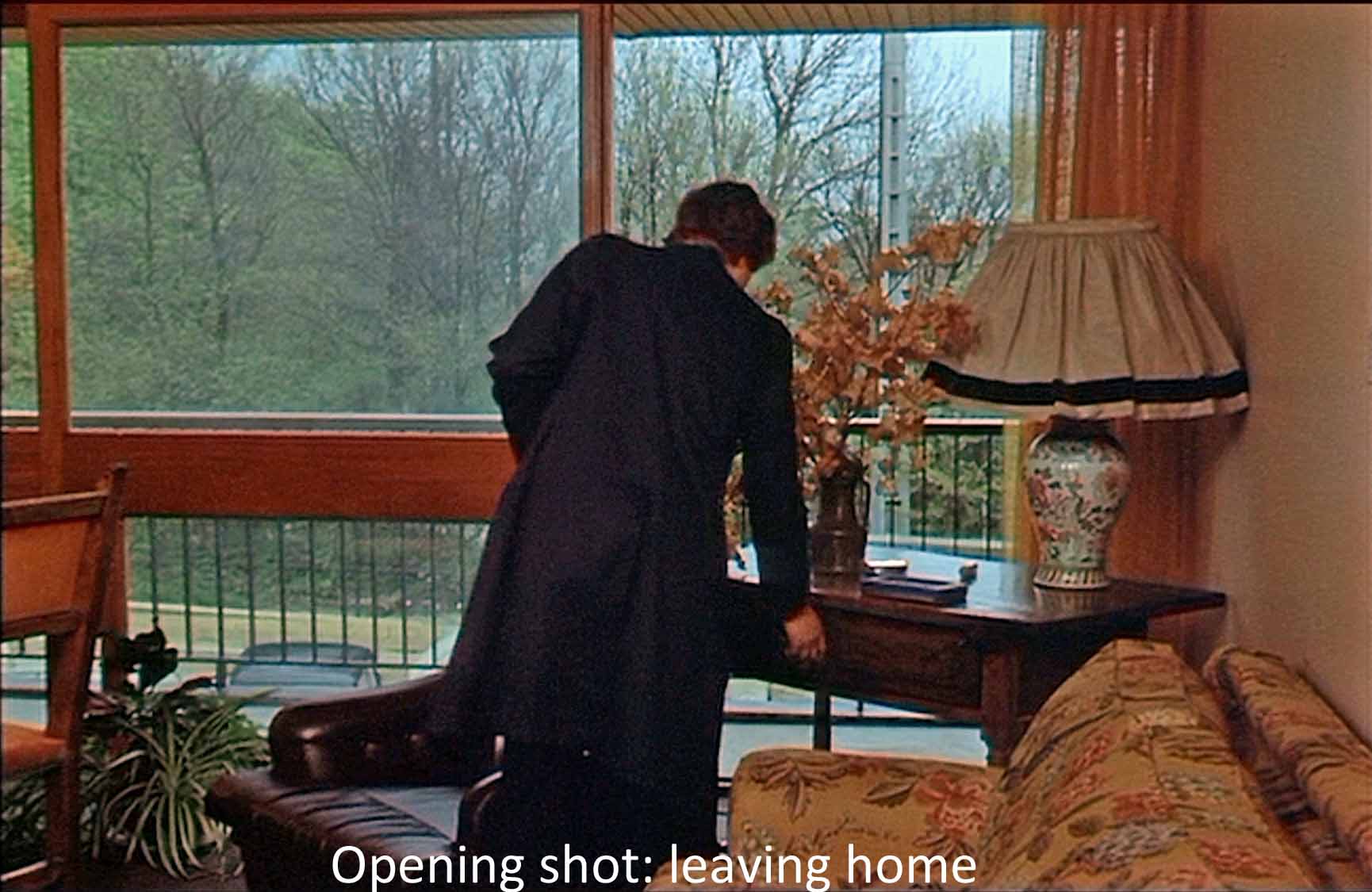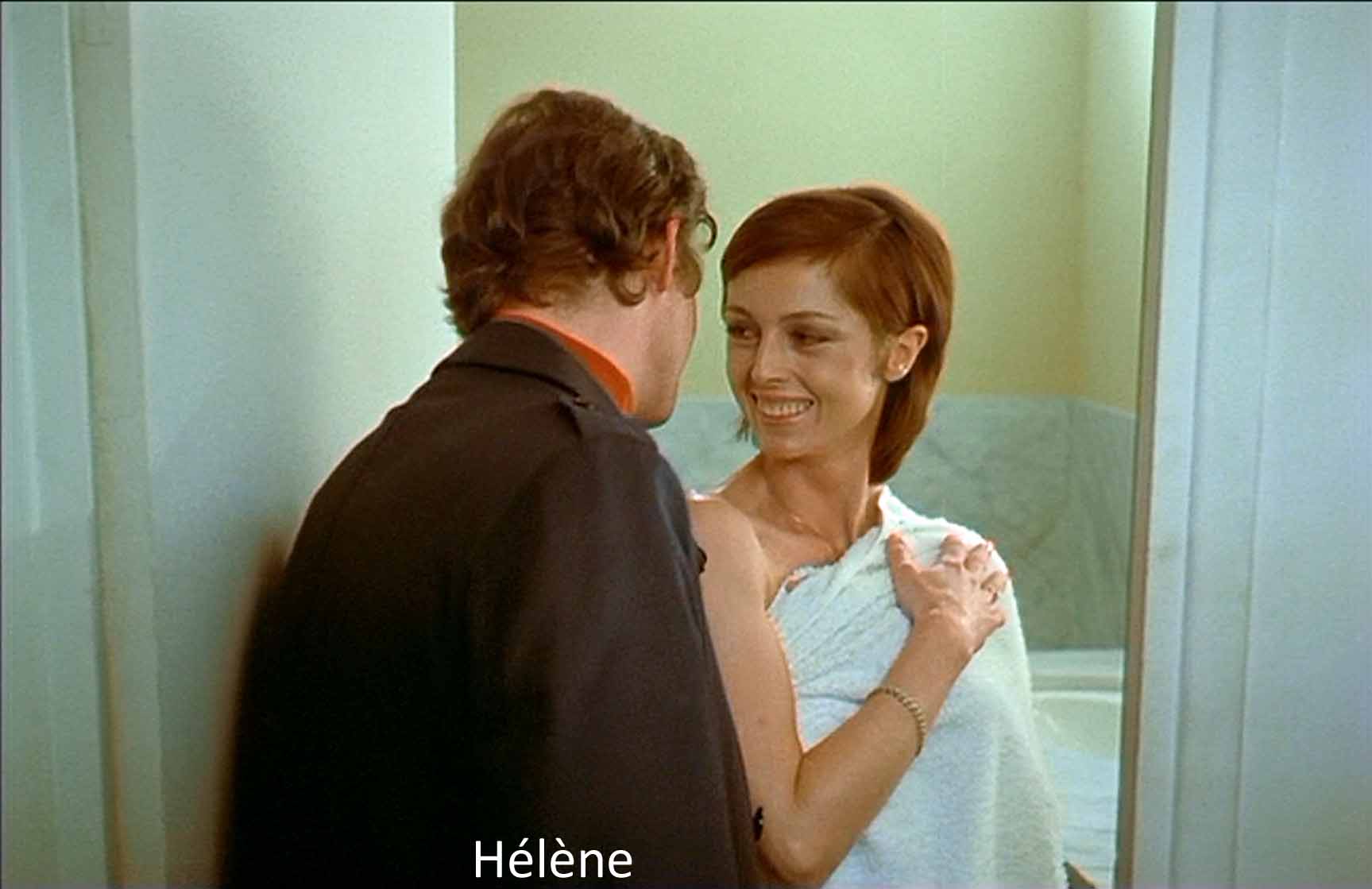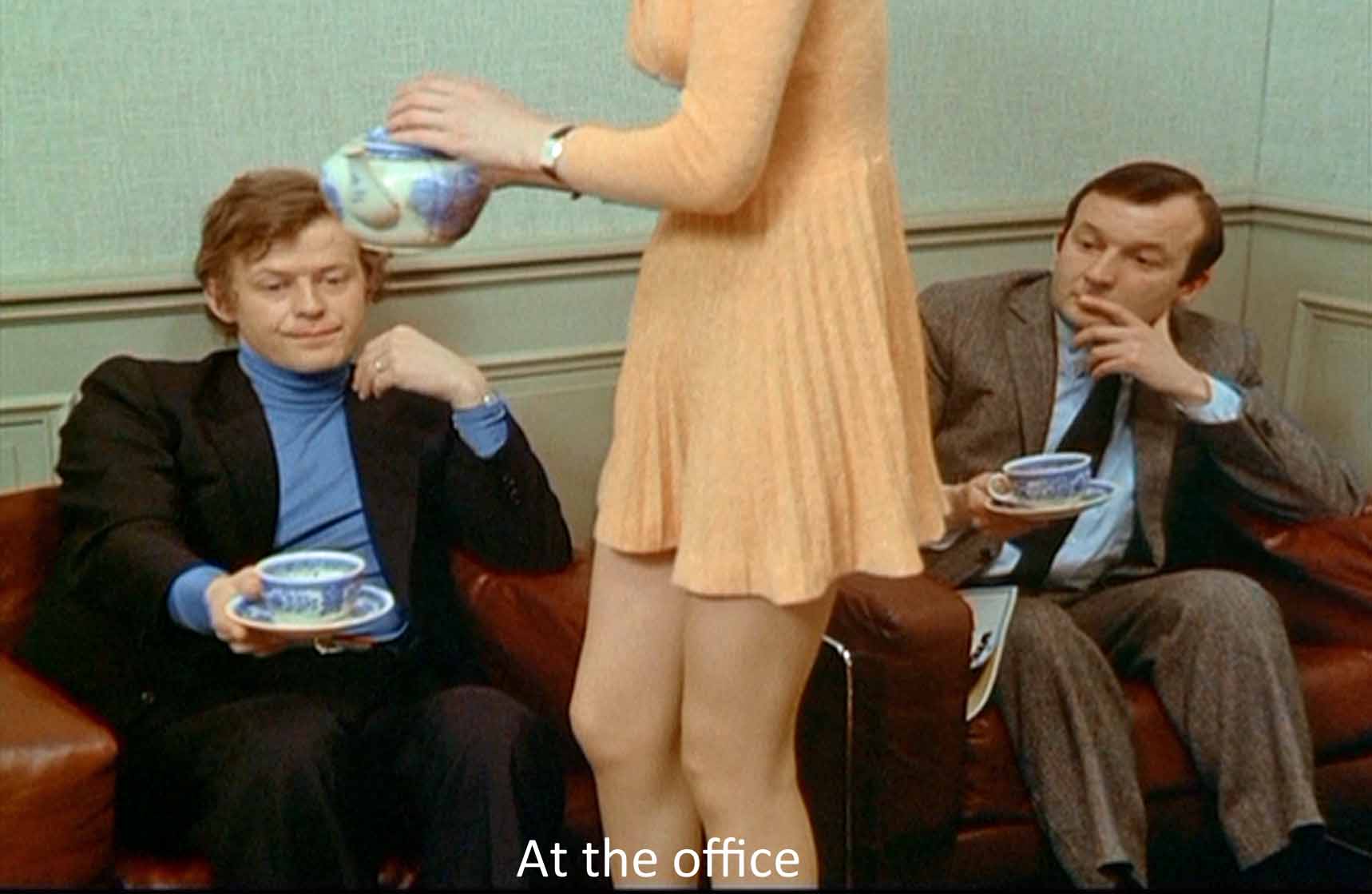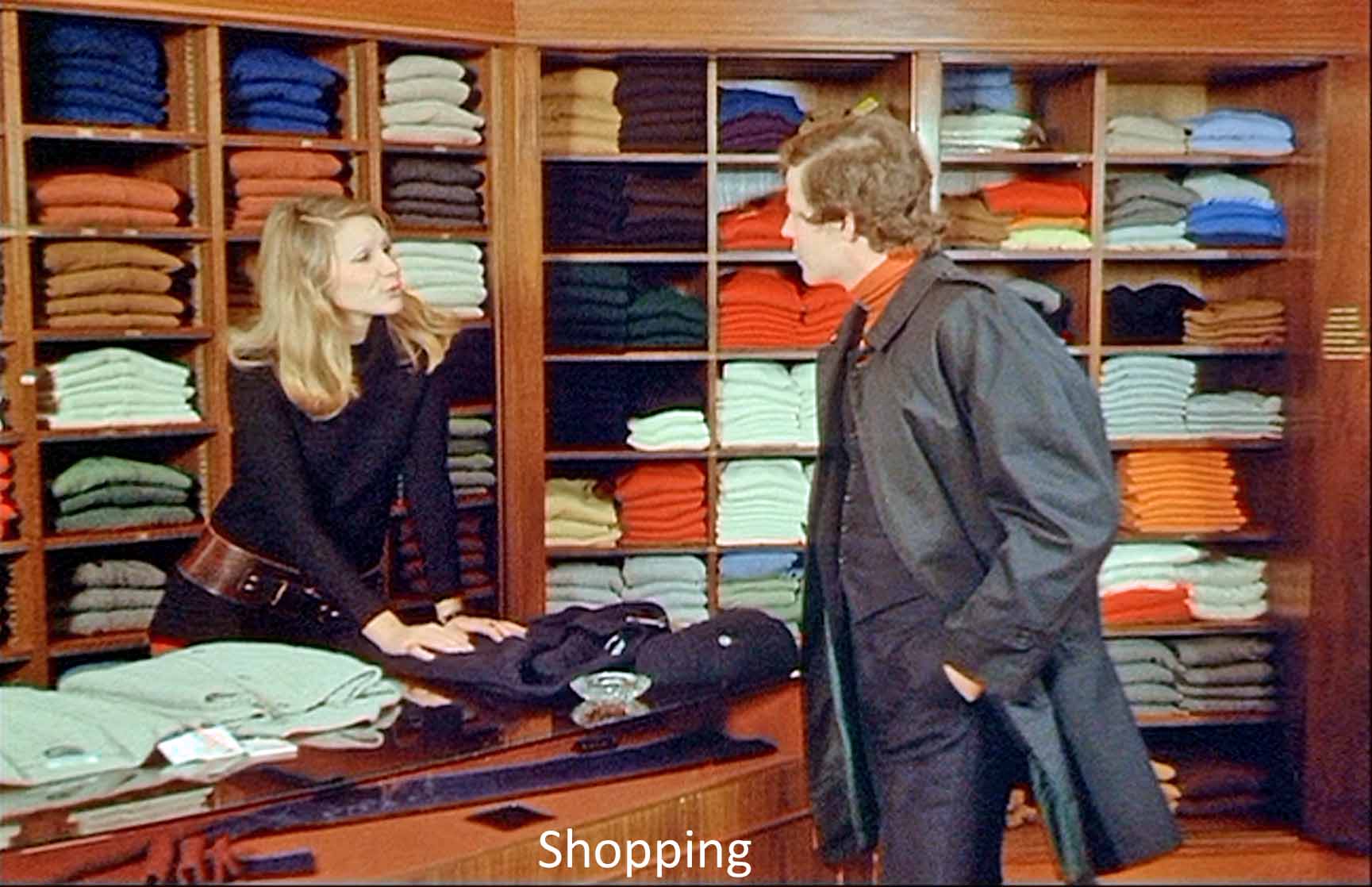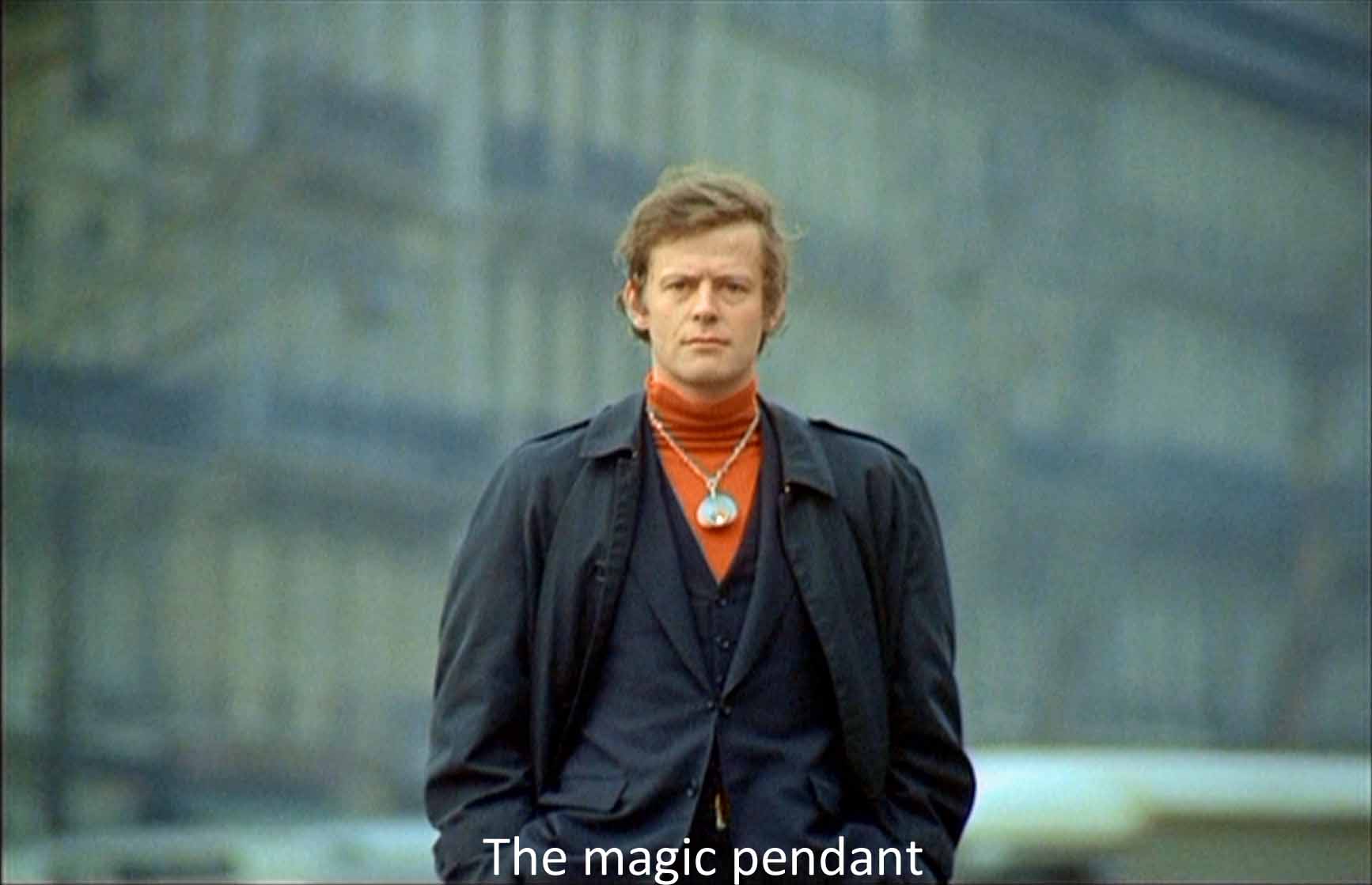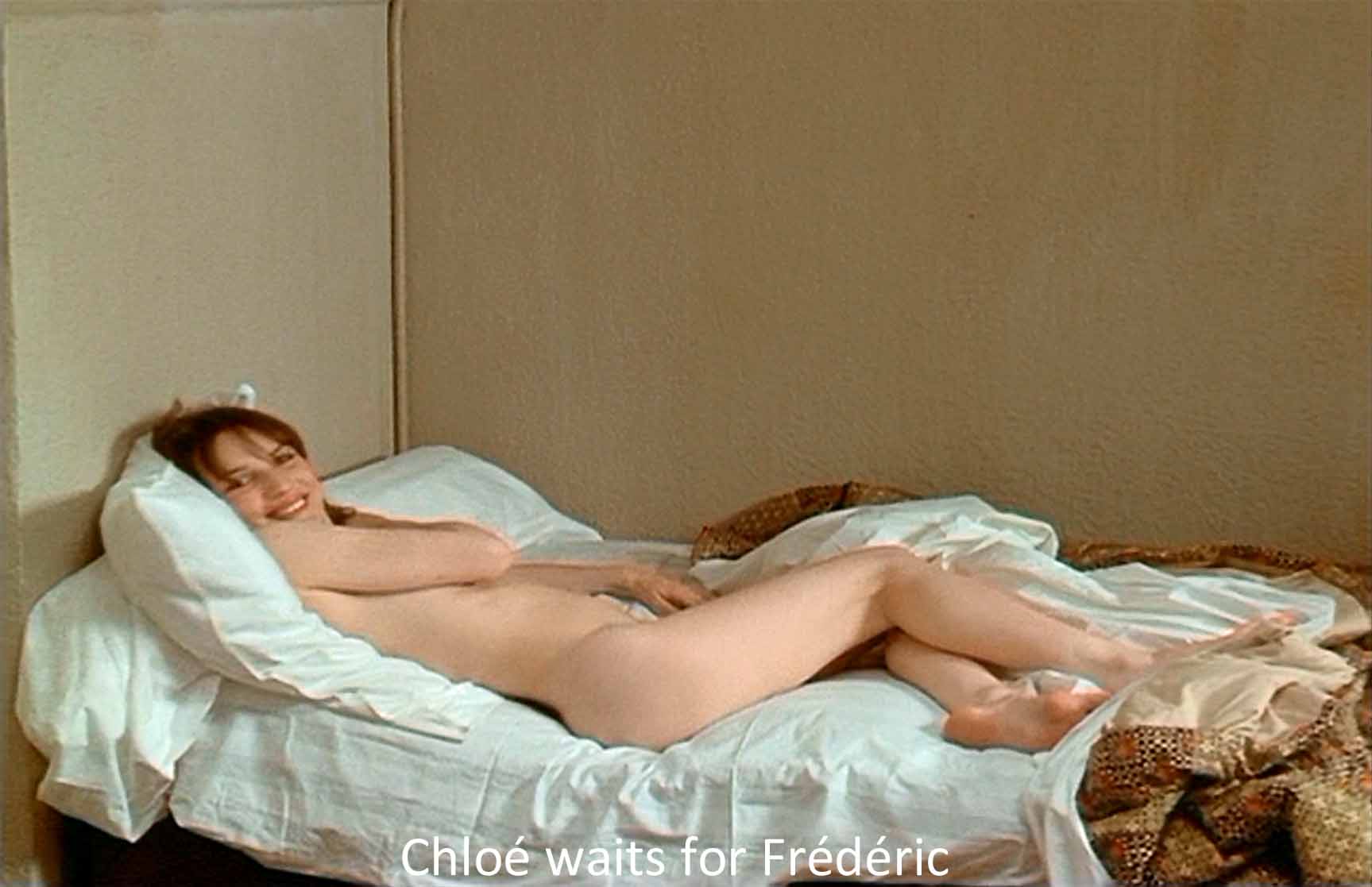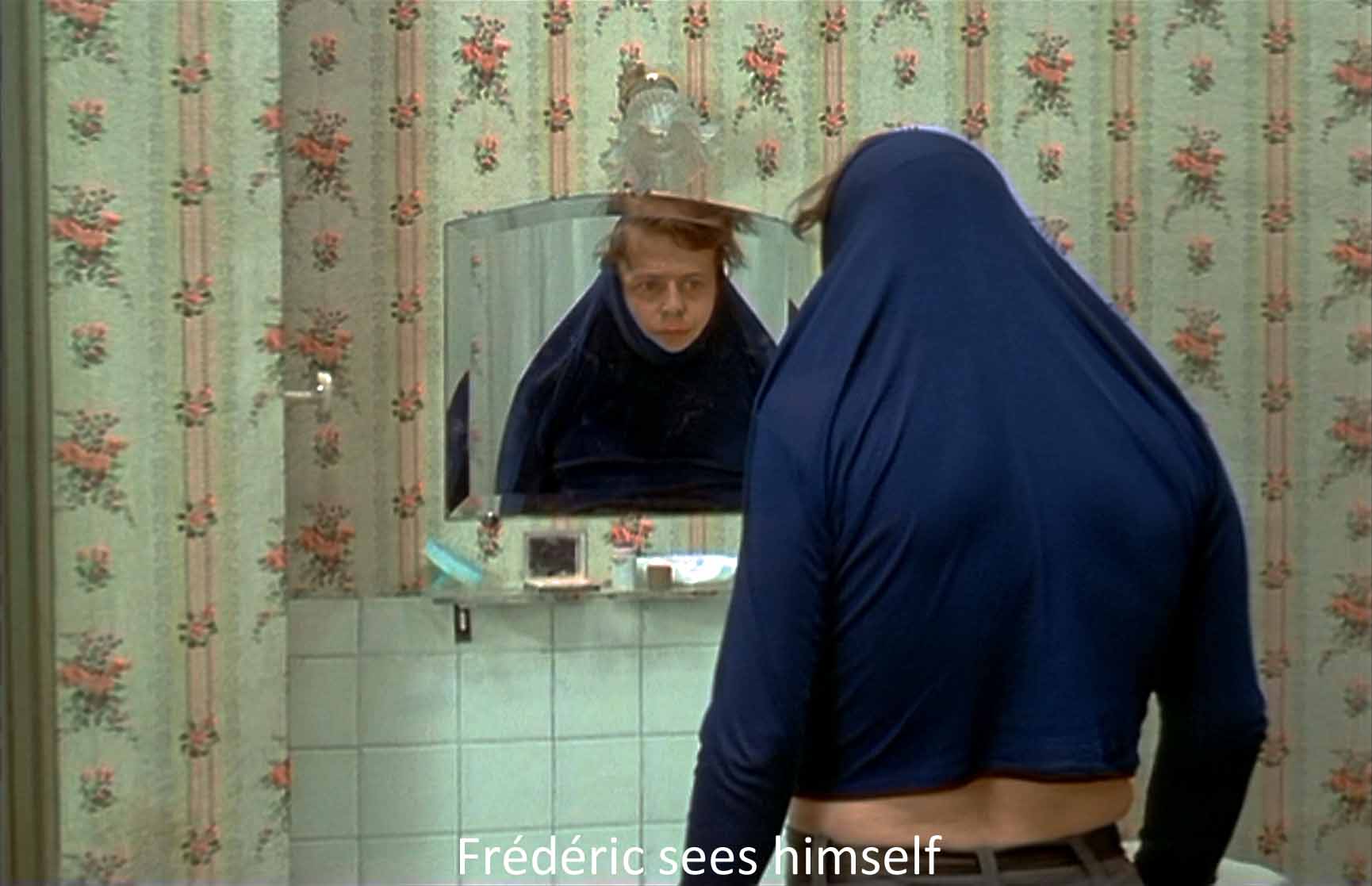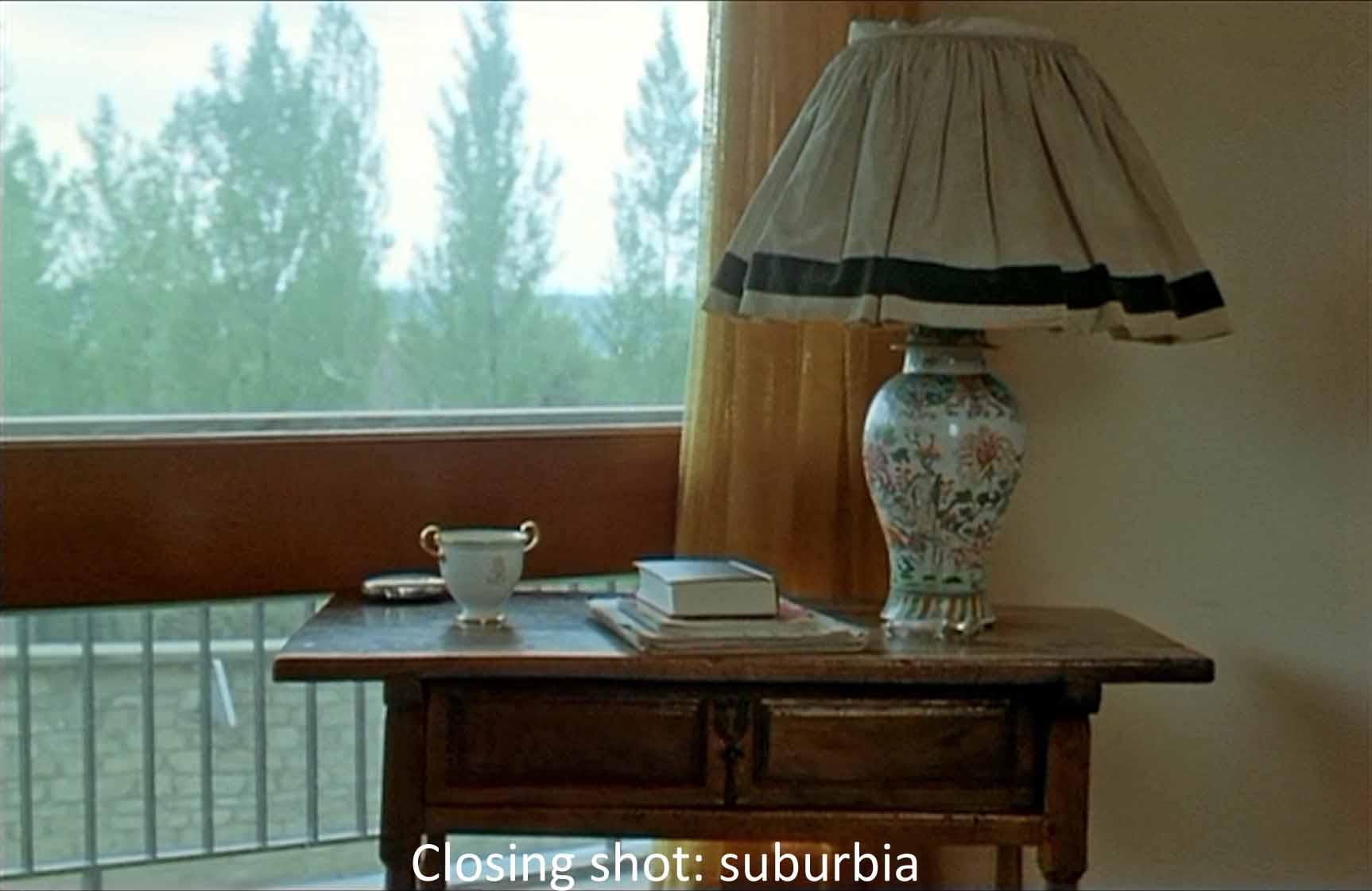This is the last of Éric Rohmer’s Six Moral Tales. The films have progressed from young students chasing girls in Paris to the hero of this film, a thirtyish executive, married with one child, living in the suburbs. He is a man well-launched on the sea of life. But Rohmer’s Six Moral Tales also progresses toward Rohmer’s ideal, faithful married love with children, embodied in a final scene of this young couple’s finding their way toward just that, love in the afternoon.
At the same time our hero Frédéric (Bernard Verley), although he may be thirty-plus and a father and a successful professional, exudes boyishness. His is a smooth, hairless teenager’s face topped with tousled blond hair. He doesn’t wear the shirt and tie of his more professional colleagues, but a turtleneck. He doesn’t like the regularity of office life and lunches. Instead he plays hooky in the afternoons, eating a sandwich in a café, aimlessly shopping, and girl watching.
This last culminates in a dream sequence (one of Rohmer’s many borrowings from Hitchcock, but not nearly as dazzling a dream as the one Salvador Dalí created for Spellbound (1945). In Rohmer’s dream sequence, which Frédéric identifies as a ten-year-old boy’s fantasy, he has a magic pendant that makes women obey his sexual demands. One after another he encounters Rohmer’s actresses in the preceding Six Moral Tales, and they accede to his propositions, all but tough little Béatrice Romand, the Laura of Claire’s Knee (1970). Are these women Rohmer’s “harem”? I think he is confessing that his own filmmaking (and our film viewing?) correspond to Frédéric’s erotic imaginings. Rohmer was writing and filming in the midst of the sexual revolution in France (and America), when marriage had ceased to be a prerequisite for sex.
But Frédéric loves his pretty little wife, admires her beauty, and desires her. Hélène is played by Françoise Verley, the actual wife of Bernard Verley, who plays Frédéric. Is this another of Rohmer’s pieties? But love doesn’t stop Frédéric from girl watching.
He talks about it at length, but it is only one aspect of a bigger pattern. Frédéric has the one but he longs for the many. That’s true of women. It’s also true of his reading many books at once, although forced to read only one on his commuter train. The choice of books is telling, too. He chooses Bougainville’s Voyage autour du monde (1772), a memoir of the author’s circumnavigation of the globe. Bougainville described Tahiti as an earthly paradise of pleasures, especially free love. (He influenced Rousseau’s idea of the noble savage.) Later, Frédéric tells some guests he is reading Captain Cook’s adventures in English. The choices tell us Frédéric’s need to escape suburban life and marriage. And Frédéric tells us he doesn’t care for the provinces or suburbia. He longs for the multitudes and multiplicities of a big city where one can lose one’s (single) self and where he can watch many women rather than just the undeniable beauty of his wife.
In Paris, he likes to amuse himself by going shopping, a metaphor, I take it, for his shopping for women. We watch him dismiss a male store clerk’s efforts to sell him a green turtleneck. Instead he buys a boyish plaid shirt he wasn’t even looking for from a female clerk who more or less discourages him from buying. She foreshadows his strange relationship with Chloé (Zouzou).
Her entrance marks the first transition in Rohmer’s three-part structure. The Prologue over, she pops into Frédéric’s office, starting Part I. She looks coarse, vulgar, and aggressive, her lips and jaw too big compared to Hélène’s. She is wearing a tatty sheepskin jacket with a torn seam, doubtful jeans, bad make-up—a vaguely hippie mess. She too had been shopping, continuing the metaphor. When Frédéric knew her, she was the girlfriend of his friend Bruno, and she gave Bruno such pain that he attempted suicide. Frédéric didn’t like her. More or less by chance—Rohmer’s favorite theme—Chloé had happened on Frédéric’s address and looked him up in hopes of his helping her get a better job. She has had a succession of men after Bruno, and she is working in a sleazy bar. Like Frédéric, she has odd working hours. The bar is the Agamemnon, a name with overtones of marital infidelity. (Think, too, about Hélène, a great beauty but an unfaithful wife.) Chloé’d like a better job. Can Frédéric help? F is at first non-plussed and rather curtly says no.
But by chance(!), Frédéric and Hélène, while out shopping(!) for the baby she is expecting, run into Chloé. She makes a big fuss over Frédéric’s wife and daughter and reappears later in Frédéric’s office bearing gifts of clothing for the new and old babies.
Clothing is a major metaphor in L'Amour l'après-midi. It starts with one of the secretaries in Frédéric’s office showing off a new green coat. The green we are told means it will not go out of fashion—it’s permanent. Then Frédéric rejects a green turtleneck in a store. He doesn’t like permanence, too suburban. At first, Hélène wears blue or green, while Chloé wears red. In Part I, Chloé is the antithesis of bourgeois Hélène. Later in the film, as her relationship with Frédéric thickens, threatening permanence, Chloé tries on a green dress, but takes it off again, reverting to red.
Clothing announces our relationship to others. Frédéric is the young husband and boss. His turtlenecks suggest that he doesn’t want to quite fit in that pattern. His secretaries dress as young women looking to entice men, hopefully into marriage. Hélène dresses like a teacher, discreetly. Chloé begins dressed like a hippie but ends quite stylishly as she begins to put her life together. Shopping for clothes suggests an exploration of relationships—like infidelity.
Nudity is the opposite, people raw, not in society. We get three instances in this picture. The first comes almost at the beginning of the picture: Hélène is getting out of the shower as Frédéric leaves for work. He embraces her lovingly while she warns that he’ll get wet. But this embrace won’t “stain.” The second happens by chance. Hélène has added an English au pair to the household after the baby boy is born. She pops out nude to take care of the baby. Frédéric, in his pajamas sees her, apologizes, and shows no interest. But the third is more intentional than either of the first two. Chloé emerges like Hélène from the shower (evoking a comparison in our minds, at least). But she, unlike Hélène, asks Frédéric dry her and, really, to embrace her. She then goes to the bed and lies on it, nude, waiting for Frédéric.
Chloé’s relationship with Frédéric goes through stages. Through Part I, she disentangles herself from the man she is living with. Frédéric helps her get her stuff from his apartment and move to a new flat (to the merry suspicions of the landlady). She finds a job in a better restaurant, and they settle into regular afternoon meetings (to the secretaries’ smirks). Chloé contemplates suicide, but Frédéric finds he enjoys talking to her, something he cannot do with his wife. She disappears with another lover, but when she returns she is well made-up and well-dressed, quite the conventionally attractive Parisienne. They have abstract discussions of marital infidelity and polygamy, and she encourages him to cheat. Their relationship is all talk.
Part II begins abruptly when Hélène gives birth to baby Alexandre. To amuse the baby, Frédéric plays peek-a-boo and mugs with his pullover pulled over his face (an important moment, it turns out). In the other side of his life, Chloé announces that she plans to seduce Frédéric. Asserting that he and his wife trust each other, “Freedom is important to me,” Frédéric announces (one of his many self-aggrandizing and self-deceiving utterances). But Chloé succeeds in forcing him into a role, the errant husband cheating on his wife in a thoroughly traditional French way.
Frédéric continues his meetings with Chloé, who has become the assistant to the owner of a dress store. Frédéric fits right in, even selling a dress, and in the basement Chloé models a dress for him—and shows off her underwear for his caresses. Chloé says she would like to have a child by him. Now they embrace as well as talk. At one point Frédéric strokes her nude back. The next time Frédéric comes to her apartment, she greets him from the shower and asks him to dry her. She settles on her bed, nude in the pose of Ingres’ La Grande Odalisque. Is this a reference to Frédéric’s wish for a harem of women? Or to Rohmer’s harem of actresses in the dream sequence?
As Frédéric is undressing for his adulterous encounter, he happens to look into a mirror and sees his pullover over his face in the same pose he had taken to amuse his children. He is shaken and flees through the mazy hallway and down five flights of stairs—this is a definitive leaving.
Back in his office, he calls his wife to tell her he is coming home. They sit on the sofa, and he tells her that she is so beautiful that she intimidates him. He holds her and begins passionately to undo her dress. She cries but says she is laughing—evidently she realized something was going wrong in their marriage—had she also been tempted?—and they head for the bedroom. Love in the afternoon—the right way, at least by Rohmer’s standards. But to the contrary: the last lingering shot, parallel to the opening shot, but empty, suggests the emptiness of suburban life, Frédéric’s future.
Not only has Chloé progressed, the film has. We have seen Frédéric go from his world of sexual fantasies and multiplicity to a world of unity (the one woman) and reality. Reality is marriage, fidelity, and above all children. They are a fantasy for Chloé but reality for Frédéric and Hélène. And for Rohmer whose Catholic values pervade these six films, no doubt to the dismay of his fellow New Wave directors and the champions of sexual freedom in 1972.
In short, this last of the Six Moral Tales, the one that ends the series, is paradoxically about progress, the progression of Chloé, Frédéric and Hélène and the progression of the six films. It is typical of Rohmer’s riddling or, a psychological critic like me might say, conflicted imagination that the last of these films should be about progression into a future of the bourgeois and traditional values that the devoutly Catholic Rohmer believed in. While I do not think like him, I can admire—and do—the immense skill with which Éric Rohmer can turn ideas and moral choices and chance itself into stories and movies—great movies.
